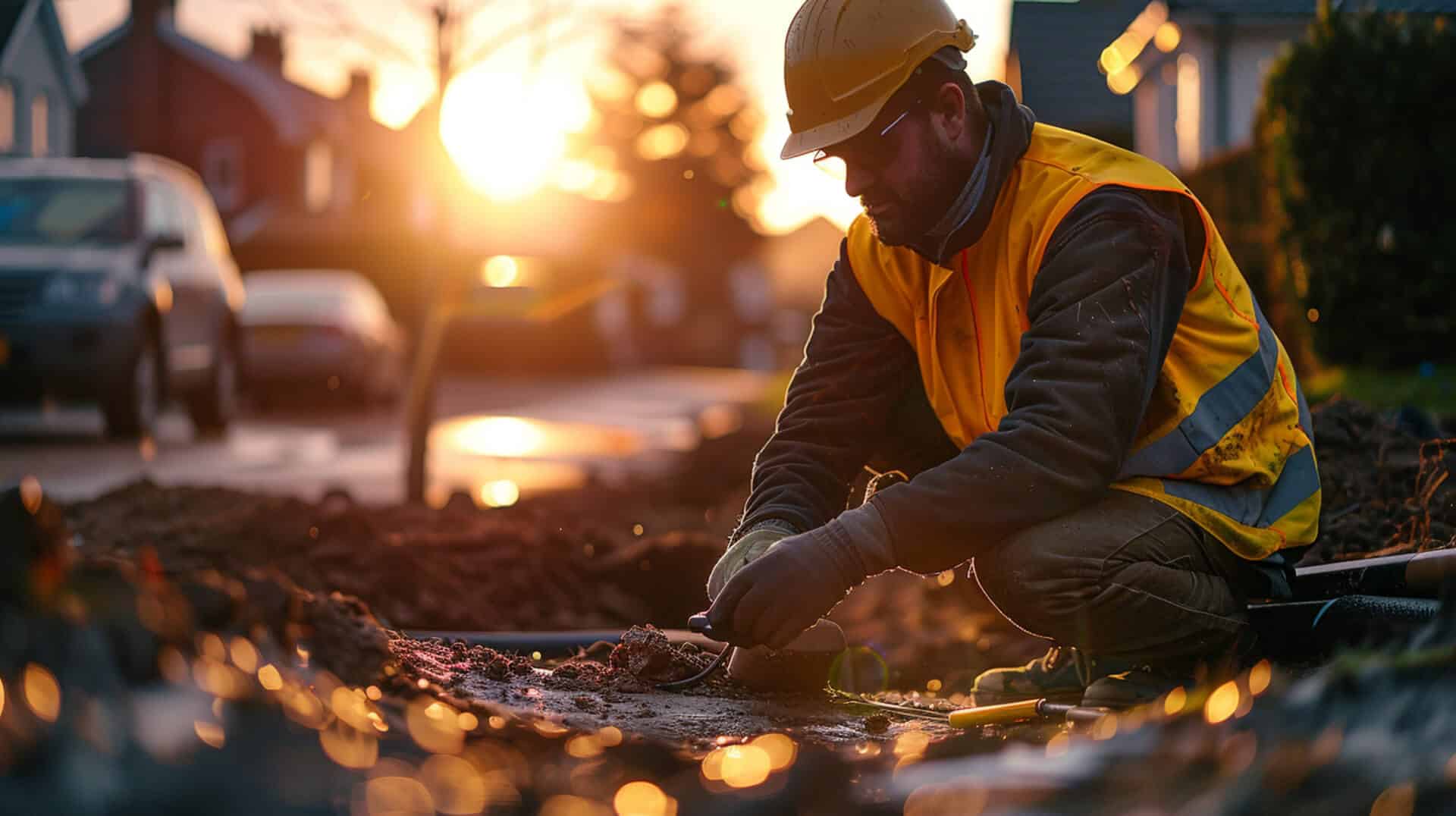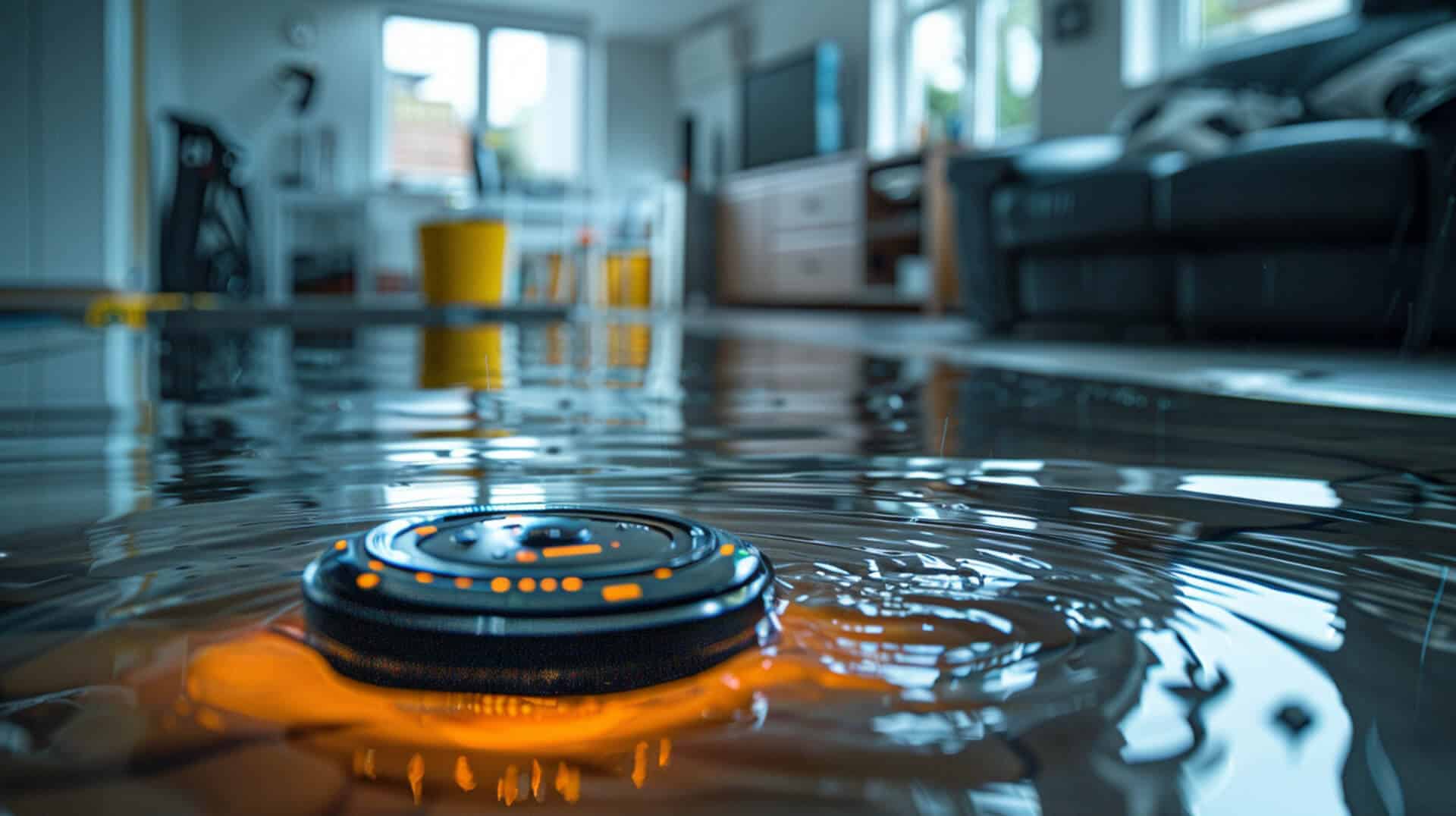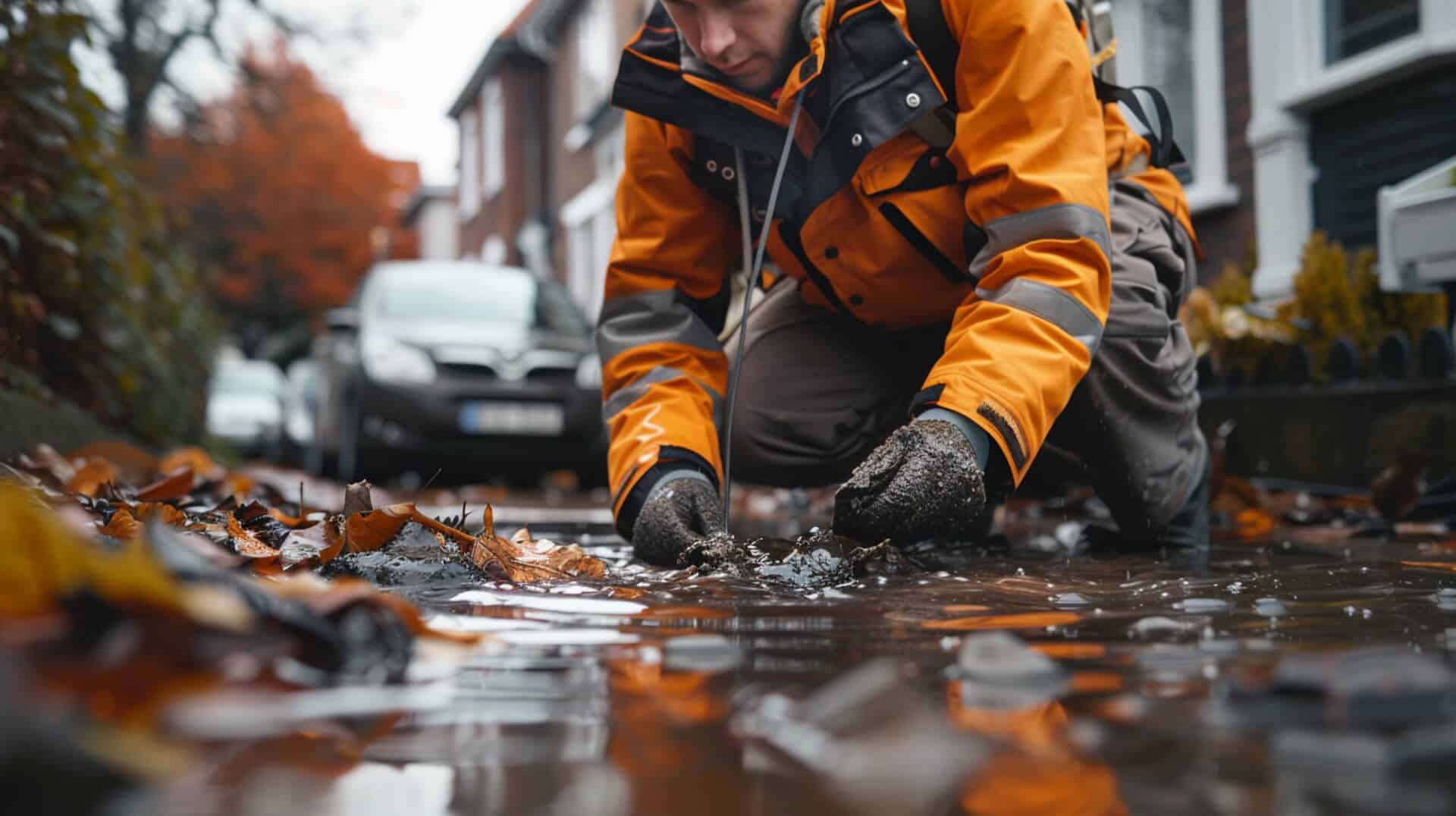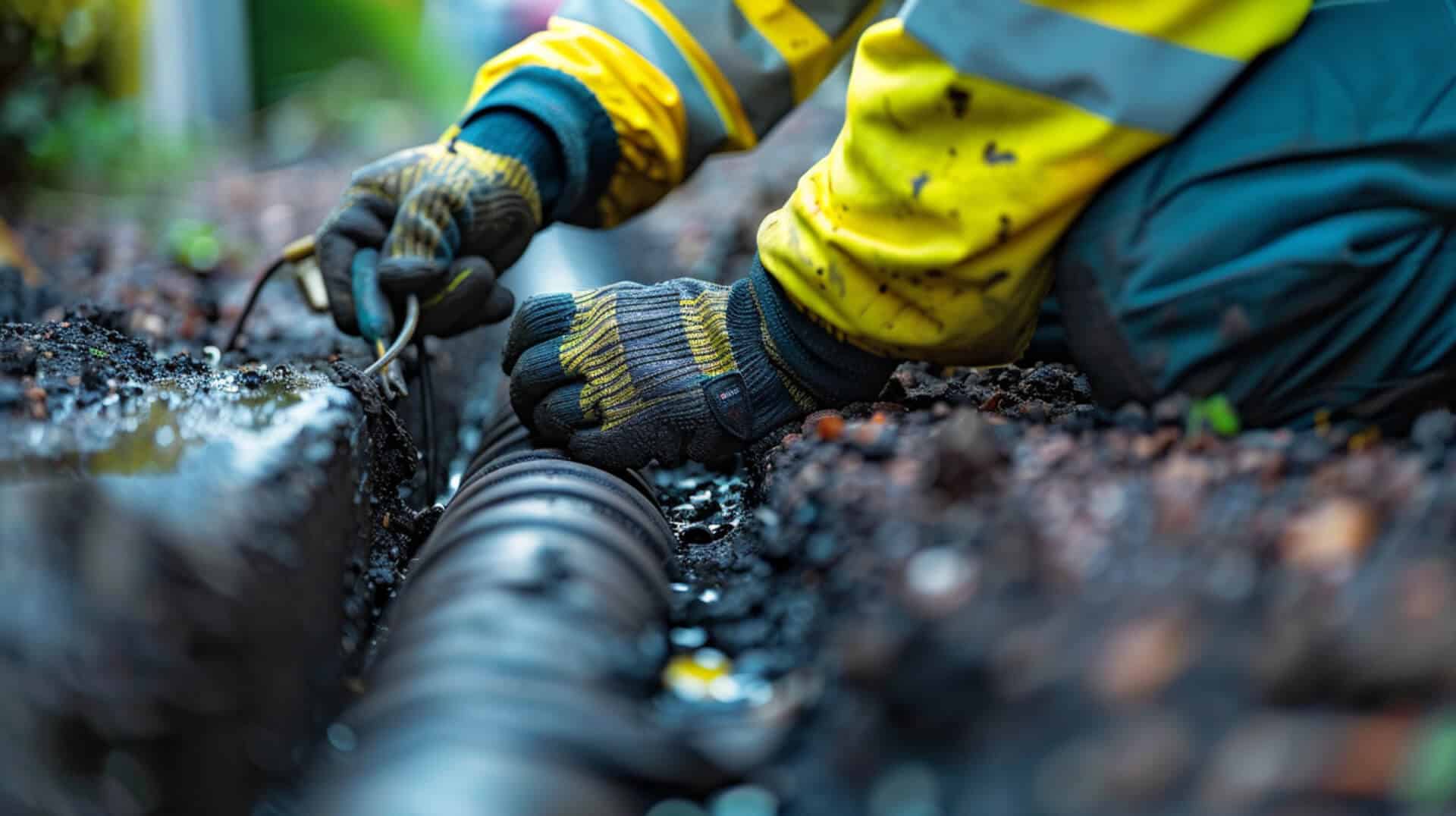 What Are The Benefits Of Drain Mapping And Tracing Services
What Are The Benefits Of Drain Mapping And Tracing Services

Drain mapping and tracing services are specialised procedures that provide a detailed understanding of underground drainage systems. These services are essential for property management, offering critical insights into the layout and condition of drainage infrastructure. By employing advanced technologies such as CCTV, sonar sondes, ground-penetrating radar, and tracing dyes, professionals can deliver precise and comprehensive documentation of subsurface utilities.
The Critical Role in Property Management
For property owners, business owners, and facility managers, understanding the intricacies of their drainage systems is vital. Accurate drain mapping can prevent costly excavation errors, streamline construction planning, and aid in flood prevention. It is also a key factor in maintaining regulatory compliance and ensuring the safety of both the public and the environment.
Enhancement Through Advanced Technologies
The effectiveness of drain mapping and tracing services is significantly enhanced by the use of advanced technologies. CCTV surveys provide visual inspections of pipes and conduits, while sonar sondes offer depth and feature identification. Ground-penetrating radar can detect non-metallic drains and utilities, and colour-coded dye tracing helps in determining flow direction and identifying leaks.
Crucial Applications Across Various Sectors
These services find their most crucial applications in areas such as construction planning, renovation projects, utility maintenance, and environmental protection. By identifying potential contaminants and discharge points, drain mapping and tracing services play a pivotal role in pollution prevention and environmental stewardship.
The Role of Technology in Drain Mapping and Tracing
Understanding the technologies behind drain mapping and tracing is essential for grasping their benefits. These services rely on a suite of advanced tools to provide accurate and detailed information about underground drainage systems.
Primary Technologies Used
Drain mapping and tracing services utilise a combination of technologies:
- Closed-Circuit Television (CCTV) Surveys: For visual inspection of drain interiors.
- Sonar Sondes: To determine the depth and features within drainage systems.
- Ground-Penetrating Radar (GPR): For locating non-metallic drains and utilities.
- Colour-Coded Dye Tracing: To establish flow direction and identify leaks.
Contribution of CCTV to Accuracy
CCTV plays a pivotal role in drain mapping by offering a direct visual assessment of the drain’s condition. This technology allows for the identification of blockages, structural issues, and other anomalies within the drainage system.
Complementary Role of Sonar Technology
Sonar sondes complement CCTV by providing data on the depth and profile of drainage systems, which is particularly useful in murky conditions where visual inspection is hindered.
Importance of Technology Integration
Integrating these technologies ensures a comprehensive service. The combination of visual and non-visual inspection methods allows for a full assessment, ensuring that no aspect of the drainage system is overlooked. This holistic approach is crucial for accurate mapping, effective planning, and the prevention of potential issues.
Preventing Excavation Errors and Construction Planning
Accurate drain mapping and tracing services are instrumental in mitigating excavation errors and streamlining construction planning. These services provide a detailed understanding of subterranean infrastructures, which is crucial for any construction or renovation project.
Role of Precise Mapping in Construction
Precise mapping plays a pivotal role in construction planning by:
- Identifying the exact location of underground utilities: This prevents accidental damage during excavation.
- Providing detailed information on drainage systems: Including depth, size, and flow direction, which is essential for project design and implementation.
Benefits of Avoiding Excavation Errors
Avoiding excavation errors is beneficial for:
- Project Timelines: It reduces delays caused by unexpected encounters with underground utilities.
- Budgets: It prevents costly repairs and fines associated with damaging existing infrastructure.
Contribution to Project Safety
Accurate drain mapping significantly contributes to project safety by:
- Reducing the risk of accidents: It ensures that heavy machinery operates safely, away from hidden utilities.
- Protecting workers: By clearly marking utility locations, workers are informed and cautious, reducing the likelihood of injury.
Through these services, you can ensure that your construction projects are safer, more efficient, and compliant with regulatory standards.
Enhancing Flood Prevention and Water Management
Drain mapping and tracing services play a significant role in flood prevention and water management, offering substantial benefits to property owners.
Facilitation of Flood Prevention
Drain mapping services contribute to flood prevention by:
- Identifying potential blockages: Early detection allows for timely interventions.
- Mapping drainage patterns: This helps in predicting and managing flood scenarios.
Contribution to Effective Water Management
Understanding the drainage system through these services aids in water management by:
- Assessing drainage capacity: Ensuring systems can handle current and future water flow.
- Planning for extreme weather: Creating strategies to mitigate the impact of heavy rainfall.
Benefits to Property Owners
Property owners gain from improved flood prevention measures by:
- Protecting property value: Reducing the risk of flood damage maintains property integrity.
- Ensuring insurance compliance: Adequate flood prevention can affect insurance premiums and coverage.
Importance of Water Management
Effective water management is critical for:
- Sustainability: It supports the conservation of water resources.
- Long-term maintenance: It prevents costly long-term damage to property infrastructure.
By investing in drain mapping and tracing services, you’re taking a proactive step towards safeguarding your property against water-related issues.
Pollution Management and Environmental Protection
Drain mapping and tracing services are not only essential for infrastructure management but also play a significant role in environmental stewardship.
Aiding Pollution Management
These services enhance pollution management by:
- Identifying potential contaminants: Such as oils and chemicals that may enter the drainage system.
- Locating discharge points: To prevent pollutants from reaching natural water bodies.
Role in Environmental Protection
Identifying discharge points is crucial for:
- Mitigating environmental impact: By controlling the sources of pollution.
- Facilitating remediation efforts: Enabling targeted clean-up and conservation measures.
Importance for Regulatory Compliance
Pollution management is vital for:
- Adhering to environmental regulations: Ensuring that drainage systems do not violate pollution standards.
- Avoiding fines: By maintaining compliance with local and national environmental laws.
Leveraging Services for Stewardship
Property owners can leverage these services to:
- Manage sewerage charges: By accurately mapping drainage, owners may qualify for rebates.
- Demonstrate environmental responsibility: Contributing to the overall well-being of the community.
Through responsible drain mapping and tracing practices, you contribute to the preservation of the environment while aligning with regulatory expectations.
Ensuring Regulatory Compliance and Avoiding Legal Issues
Drain mapping and tracing services address several regulatory compliances, which are critical for property management and development. These services help property owners, business owners, and facility managers navigate the complex landscape of legal requirements related to underground utilities.
Addressed Regulatory Compliances
Drain mapping and tracing services ensure adherence to:
- Planning Permissions: Providing detailed information required for obtaining construction approvals.
- Environmental Regulations: Identifying potential contaminants and preventing unlawful pollution.
Avoidance of Legal Issues
By utilising these services, you can avoid potential legal issues by:
- Ensuring Accurate Documentation: Maintaining records of the drainage system’s layout and condition.
- Preventing Damage to Utilities: Avoiding costly legal repercussions from inadvertently damaging underground infrastructure.
Crucial Nature of Regulatory Compliance
Regulatory compliance is crucial for:
- Protecting Public Safety: Ensuring that any work done does not pose a hazard to the community.
- Maintaining Environmental Standards: Preserving natural resources by preventing pollution.
Community Benefits
Adherence to regulations benefits the wider community by:
- Promoting Responsible Development: Encouraging practices that do not compromise public or environmental health.
- Upholding Standards: Ensuring that all development work meets established safety and environmental criteria.
Through professional drain mapping and tracing services, you ensure that your projects are compliant, thereby safeguarding your interests and contributing to the well-being of the community.
Cost-Efficiency and Long-Term Savings
Drain mapping and tracing services are not only a proactive measure for infrastructure management but also a strategic financial decision for property owners.
Achieving Cost-Efficiency
These services offer cost-efficiency by:
- Minimising Disruption: Conducting non-invasive surveys that prevent the need for extensive excavation.
- Preventing Damage: Avoiding the costs associated with accidental utility strikes during construction.
Contributing to Long-Term Savings
Long-term savings are realised through:
- Accurate Diagnostics: Identifying issues early can prevent expensive emergency repairs.
- Maintenance Planning: Facilitating effective maintenance schedules that extend the life of drainage systems.
Financial Prudence for Property Owners
Investing in drain mapping and tracing services is financially prudent because:
- It Reduces Risk: Providing a clear picture of underground infrastructure reduces the risk of costly surprises.
- It Enhances Property Value: Ensuring a well-maintained drainage system can positively impact property valuation.
Cost-Effective Problem Diagnosis
Accurate problem diagnosis leads to cost-effective solutions by:
- Targeting Specific Issues: Enabling precise interventions that address the root cause of drainage problems.
- Informing Investment Decisions: Assisting property owners in making informed decisions about infrastructure investments.
By choosing professional drain mapping and tracing services, you are investing in the longevity of your property’s infrastructure and ensuring financial savings over time.
Professional Services vs. DIY Approaches
When considering drain mapping and tracing, property owners may weigh the options between professional services and do-it-yourself (DIY) methods. Understanding the risks and benefits associated with each approach is crucial for making an informed decision.
Risks of DIY Drain Mapping
DIY attempts at drain mapping and tracing can lead to:
- Inaccuracies: Without specialised equipment and expertise, DIY methods are prone to errors.
- Safety Hazards: Untrained individuals may face risks when dealing with underground utilities.
- Non-Compliance: DIY efforts may not meet the regulatory standards required for legal compliance.
Ensuring Accuracy and Compliance
Professional services offer:
- Expertise: Trained technicians use precise instruments to ensure accurate mapping.
- Safety: Professionals adhere to safety protocols to protect themselves and your property.
- Regulatory Adherence: Certified companies are knowledgeable about local regulations and ensure compliance.
Disadvantages of DIY in Certain Scenarios
A DIY approach may be particularly disadvantageous when:
- Complex Projects: Large-scale or complex properties require a level of precision that DIY methods cannot guarantee.
- Legal Implications: Projects that require official documentation for permits or sales need the credibility of professional services.
Choosing professional drain mapping and tracing services ensures that you receive accurate, safe, and compliant results, avoiding the pitfalls of DIY approaches.
Preventative Maintenance and Repair Options
Preventative maintenance is a cornerstone of infrastructure management, and drain mapping services are a critical component in this process. By providing detailed insights into the drainage system, these services enable property owners to take proactive measures to maintain system health.
Facilitation of Preventative Maintenance
Drain mapping services support preventative maintenance by:
- Identifying Early Signs of Issues: Regular surveys can detect potential problems before they escalate.
- Informing Maintenance Schedules: Detailed maps allow for targeted cleaning and repairs, preventing blockages and other issues.
Highlighted Non-Invasive Repair Methods
Accurate drain mapping facilitates non-invasive repair methods such as:
- Pipe Relining: This method reinforces existing pipes without the need for excavation.
- Patch Repairs: Localised issues can be addressed without disrupting the entire system.
Crucial Role of Preventative Maintenance
Preventative maintenance is essential for:
- Extending System Longevity: Regular upkeep can significantly increase the lifespan of drainage infrastructure.
- Reducing Costs: By preventing major repairs, property owners can save on potential future expenses.
Regular Surveys to Prevent Future Issues
Conducting regular surveys with drain mapping services can prevent future drainage issues by:
- Establishing Baselines: Understanding the current state of the system to monitor changes over time.
- Planning Upgrades: Using detailed maps to plan for system improvements and expansions.
By engaging in regular preventative maintenance informed by accurate drain mapping, you can ensure the continued functionality and efficiency of your property’s drainage systems.
Legislative and Financial Incentives for Drain Mapping
Navigating the legislative landscape can be complex, but drain mapping services provide a clear pathway to compliance and financial benefits.
Legislative Incentives Encouraging Drain Mapping
Legislative incentives for utilising drain mapping services include:
- Compliance with Planning Regulations: Ensuring that new developments or renovations meet stringent legal requirements.
- Environmental Protection: Adhering to laws aimed at pollution control and sustainable development.
Financial Benefits for Property Owners
Financial incentives such as surface water rebates offer:
- Cost Savings: Rebates can reduce annual water charges for properties with minimal surface water drainage.
- Investment Return: Accurate drain mapping can lead to long-term savings on utility bills and maintenance costs.
Long-Term Financial Benefits of Compliance
Legislative compliance is financially beneficial as it:
- Avoids Penalties: Prevents fines associated with non-compliance.
- Enhances Property Value: Compliant properties are more attractive to potential buyers or tenants.
Professional Assistance in Legislative Navigation
Professional drain mapping services assist property owners by:
- Providing Expertise: Experts are well-versed in current legislation and can guide you through the compliance process.
- Offering Documentation: Detailed maps and reports from professional services can serve as evidence of compliance.
By leveraging professional drain mapping services, you can ensure compliance with legislative requirements and capitalise on financial incentives, securing both immediate and long-term benefits.
Addressing Challenges with Advanced Diagnostic Services
Drain mapping and tracing can present various challenges, but advanced diagnostic services provide effective solutions to ensure project success.
Common Challenges in Drain Mapping
Property owners may encounter several obstacles during drain mapping and tracing:
- Outdated or Incomplete Plans: Existing documentation may be inaccurate or missing.
- Complex Underground Networks: Urban environments can have intricate and densely packed utility networks.
- Unexpected Discoveries: Renovations or extensions can lead to unanticipated findings.
Role of Advanced Diagnostics
Advanced diagnostic services address these challenges by:
- Utilising Ground-Penetrating Radar: This technology detects utilities not documented in plans.
- Employing CCTV and Sonar Sondes: These tools provide a real-time view and detailed analysis of the current state of drainage systems.
Importance of Early Problem Identification
Early identification of potential issues is crucial as it:
- Prevents Cost Overruns: Addressing problems early can avoid expensive corrective measures later.
- Ensures Project Continuity: It minimises disruptions to the project timeline.
Preventing Project Delays Through Pre-Planning
Incorporating diagnostics in the pre-planning phase can prevent delays by:
- Informing Design Decisions: Accurate data helps in making informed choices during the design stage.
- Facilitating Risk Management: Identifying risks early allows for the development of mitigation strategies.
By leveraging advanced diagnostic services, you can navigate the complexities of drain mapping and tracing, ensuring a smoother and more predictable project execution.
Integration into Property Maintenance Strategy
Drain mapping and tracing services are integral to modern property management, offering a strategic approach to maintaining infrastructure integrity and functionality.
Indispensable Services for Property Management
These services are essential due to their:
- Preventative Nature: They identify potential issues before they become costly problems.
- Accuracy: Advanced technologies provide precise information, essential for informed decision-making.
Comprehensive Maintenance Strategy
Incorporating drain mapping and tracing into property maintenance strategies ensures:
- System Health: Regular assessments keep drainage systems in optimal condition.
- Risk Mitigation: Potential risks are identified and addressed proactively.
Long-Term Benefits and Sustainability
Property owners, business owners, and facility managers can expect significant long-term benefits from these services.
Expected Long-Term Benefits
The benefits include:
- Cost Savings: Preventative measures and accurate diagnostics reduce the need for emergency repairs.
- Property Value Preservation: Well-maintained systems contribute to maintaining and enhancing property value.
Contribution to Property Sustainability and Safety
Drain mapping and tracing services contribute to:
- Environmental Sustainability: They aid in pollution prevention and responsible water management.
- Safety: Accurate maps reduce the risk of accidents during construction and maintenance activities.
By integrating drain mapping and tracing services into regular maintenance schedules, property stakeholders can ensure the longevity, safety, and sustainability of their investments.













